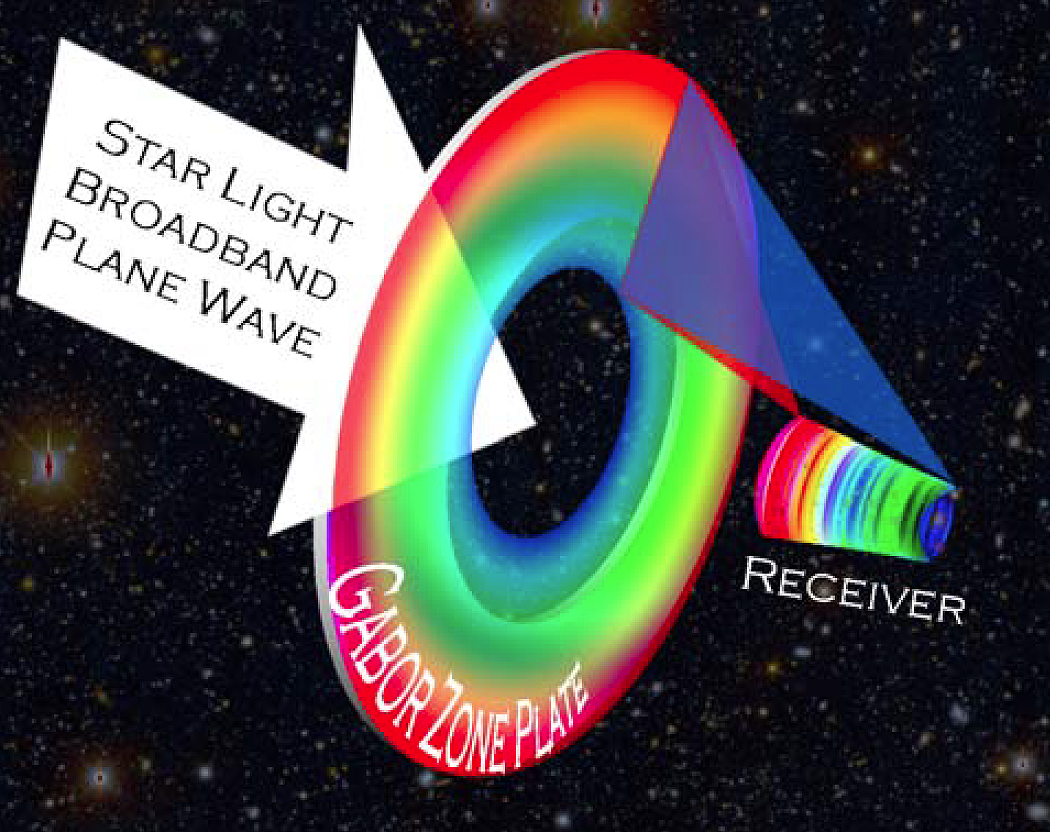Tom Ditto
3DeWitt LLC
NIAC 2019 Phase I Ditto DUET Final Report
The Dual Use Exoplanet Telescope (DUET) advances NASA’s discovery missions to find and characterize exo-planetary systems. The novel telescope design has the ability to detect exoplanets both indirectly (with radial velocity and astrometry techniques) and directly with advanced spectroscopy. DUET has an annulus gossamer membrane holographic primary objective that has four times the collection area and twice the diameter of the largest planned ground telescopes, yet its mass and stowage allow it to be delivered on a single lifter.
Unlike competing exoplanet finders, DUET does not require a coronagraph or star shade. It subtracts the parent star by taking advantage of the differences between the wavelengths of the star and its planets as a function of the distances between them. This is made possible by using a dual dispersion technique first studied by Newton in his famous prism experiment. In this telescope, wavelength is proportional to the distance of an exoplanet from its parent star.
The mission will result in a census of planets on half of all visible stars. In the “neighborhood” of earth, DUET will make spectrographic characterizations. DUET will deliver a positive signal for any water bearing planets using a Rayleigh scattering method in the near UV that in our solar system is unique to earth. Earth may be a “pale blue dot,” but in the near-UV it is luminescent. Such a signal for an exoplanet on an A, F or G class main sequence star would point to Earth 2.0.































